|
Coordinators:
Kjeld Tommy Pedersen (Denmark)
Chris Gibbins (Scotland)
Frank Majoor (Netherlands)
Mars Muusse (Netherlands)
HOME - ORG
PDF's Larus canus
1cy June - August
1cy September - October
1cy November - December
2cy January - February
2cy March - April
2cy May - August
2cy September - October
2cy November - December
3cy January - February
3cy March - April
3cy May - August
3cy September - December
adult January - February
adult March - April
adult May - August
adult September - October
adult November - December
|
Mew Gull (Larus canus) 2nd cycle (3CY): January - February
Mid-January 2017 a strong winter-storm hit the coast of the Netherlands and beached myriads of mollusks and starfishes, which in turn attracted large numbers of gull, including Iceland, Glaucous, Herring, Lesser Black-backed, Greater Black-backed, Caspian, Yellow-legged, Little, Black-headed, Mediterranean and Common Gull.
Especially on sunny days you'll find joggers, horse-riders, people with dogs, etc frequently passing by at close range, or even chasing away birds. Gradually the birds got used to it and with a little care could be approached. We rarely have Common Gulls in large numbers being this confiding; here is a link to a set of pictures of 3CY birds (2nd cycle) in January.
All pictures January 27 2017 - Scheveningen beach. (picture is link to index page)
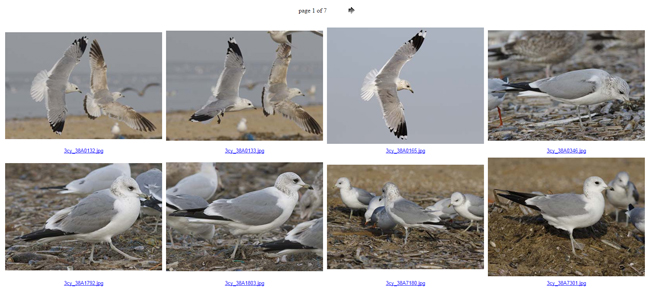
|
Some species, especially the smaller ones like Little Gull (top row) and Black-headed Gull (second row) attain adult plumage in 2 years (summer of their 3rd CY). Next rows illustrate the plumage development of Mediterranean Gull and Mew Gull, species inwhich it takes 3 years to get the adult plumage. Lower rows illustrate Lesser Black-backed Gull, Herring Gull and Great Black-backed Gull.

Click image to see 4000 px width image, free to use (4,17 MB).

Mew Gull - Mew Gull - Ring-billed Gull
Mew Gull Larus canus is an abundant winter visitor and common breeding species in The Netherlands. Two Nearctic gulls look quite the same, but can be identified in all plumages. Ring-billed Gull delawarensis is a very common and widespread species in Canada and the USA, Mew Gull brachyrhynchus is a bird of the north-west and has the main winter area along the West Coast. Due to distant breeding grounds and their migration routes, the latter species may not be a prime candidate for turning up at our beaches, but nonetheless there have been claims, e.g. a trapped bird at Klitmøller, Thy, Denmark in February 2010. Ring-billed Gull is an annual vagrant to Europe and several birds (returning birds in winter) have been well documented in the past.
When seen well, Ring-billed Gull is characteristic in adult plumage, showing:
- black ring on yellow bill
- yellow iris
- much black in wingtip, including broad sub-terminal band on P10
- small mirror on p10
- small white primary tips
- yellow legs
- pale grey upperparts, Kodak 4-5.

Ring-billed Gull delawarensis adult, April 2007, Toronto, Ontario, Canada (Wikipedia).
First cycle (first winter) Ring-billed Gull is a bird inbetween Mew Gull canus and Herring Gull argentatus, especially female argenteus. Ring-billed Gulls first impression is a large Mew Gull, od medium size with a pink-based bill and much contrast between back and wing-coverts. Like Comnmon Gull, they develop a grey back, 2nd gen scapulars in Herring Gull strongly patterned with anchor-shapes, and Ring-billed Gull may frequently replace wing-coverts in the post-juvenile moult (sse picture below, right bird), not replaced in Mew Gull nor Herring Gull. Image below (left bird) shows the flat head and stronger bill than in Mew Gull, and also the more chequered greater covert pattern (plain greater coverts in Mew Gull, lacking barring and lining), but some Ring-billed Gulls may show plain greyish greater coverts as well, and remember when coverts have been replaced 2nd gen coverts are plain greyish as well.
 |
 |
Ring-billed Gull delawarensis 1st cycle, January 10 2013, Florida (Christine Dodding). Pink base of bill. Chequered pattern on greater coverts. Side of breast and flanks not clean, but chevron (arrow-head pattern) pattern on flanks. |
Ring-billed Gull delawarensis 1st cycle, January 19 2013, Florida (Christine Dodding). Individual with many replaced median coverts, lower lesser coverts and lesser coverts. Pink base of bill. Chequered pattern on greater coverts very worn. Side of breast and flanks not clean, but chevron (arrow-head pattern) pattern on flanks. |
 |
 |
Ring-billed Gull delawarensis 1st cycle, December 30 2012, Louisiana (Ronnie Maum). Pink base of bill. Plain grey on greater coverts. Proximal half of tail also with lining and spotting. |
Ring-billed Gull delawarensis 1st cycle, December 30 2012, Louisiana (Ronnie Maum). Dense chevrons on flanks and side of breast. Chequered pattern on greater coverts. Proximal half of tail also with lining and spotting. |
 |
 |
Mew Gull canus 1st cycle, January 02 2011, Warmond, The Netherlands (Maarten van Kleinwee). Most of the scapulars replaced. Few dark markings on upper tail coverts, and tail with broad dark band. |
Mew Gull canus 1st cycle, January 29 2011, Leiderdorp, The Netherlands (Maarten van Kleinwee). Scapulars replaced, all wing feathers (coverts, tertials, secondaries and primaries) are first-generation, brown feathers. Especially the median and greater coverts look bleached. |

 |
 |
| Mew Gull canus adult, April 19 2006, Bergen, Norway, (Frode Falkenberg). Dark iris. |
Mew Gull brachyrhynchus, June 14 2012, Denali NP, Alaska, (Glenda Suebee). Paler iris and slender, finer bill. |
Adult summer Mew Gull probably is not the first plumage to be expected in The Netherlands. Therefore this page focus on Mew Gull brachyrhynchus vs Mew Gull canus in 1st cycle, 2nd cycle and adult winter plumage. Below is a list of "classic" differences, which may be more prominent on one bird than it is on the other, so please always consider individual variation in either taxon.
Classic Mew Gull canus in adult winter:
- very dark iris,
- band on bill,
- bill colour rather greenish yellow, not vivid yellow,
- leg colour rather greenish yellow, not vivid yellow,
- very delicate fine spotting 'often pencil streaking' on winter head,
- this spotting concentrated on crown and not in hindneck; also not running down to sides of breast (clean breast),
- short tongues op P10-P8,
- very large mirror on P10 often completely merged with white tip,
- large mirror on P9,
- sub-terminal black on P6 points upwards along outer edge of feather,
- often no or little black on P5,
- large white tips on outer primaries. |
Classic Mew Gull brachyrhynchus in adult winter:
- speckled, but medium dark to paler iris,
- even in winter no band on bill,
- bill colour more vivid yellow,
- leg colour more vivid yellow,
- blotchy, mottled winter head,
- this mottling concentrated in hindneck (which sometimes solidly dark); also running down to sides of breast creating scally pattern,
- long tongues op P10-P8, tongue of P9 >50% of visible length,
- obvious white tongue tips 'string of pearls' with sharp division between white and grey on P8,
- medium-sized mirror on P10 often with complete sub-terminal band,
- small mirror on P9,
- black on P9 not reaching prmary coverts,
- sub-terminal black on P6 of evenly width, not upwards along outer edge of feather,
- often broad 'symmetric' black band of even width on P5,
- sometimes spot on outeweb of P4,
- outer primary tips becoming smaller outwards,
- inner primaries and all secondaries with large white tips.
EXTRA'S
- delicate small head on long-looking neck,
- delicate fine bill,
- slightly darker than Mew Gull canus,
- P10 patterned like cachinnans, canus more like michahellis. |
 |
 |
Mew Gull canus SVS 7187947 10+CY, January 262013, Pas-de-Calais, France (Jean-Michel Sauvage). Classic Mew Gull in winter, note very dark iris, obvious band on bill, bill colour rather greenish yellow, not vivid, same for leg colour, very delicate 'pencil streaking' on head, concentrated on crown and not in hindneck or running down to sides of breast, much white in wingtip with very large mirror on P10 visible. |
Mew Gull brachyrhynchus adult, September 25 2006, Ship River, Anchorage, Alaska. (Greg Forcey). Mottled dark pattern on head, concentrated in hind neck, and continuing on breast. Small tips on outermost primaries and full broad sub-terminal band on P10. Yellow legs, yellow bill without black band, pale honey iris. |
 |
 |
Mew Gull canus NOS 5138897 18CY, November 26 2013, Boulogne-sur-Mer, France (Jean-Michel Sauvage). Classic Mew Gull in winter, note very dark iris, band on bill, bill colour rather greenish yellow, not vivid, same for leg colour, very delicate 'pencil streaking' on head, concentrated on crown and not in hindneck or running down to sides of breast, much white in wingtip with very large mirror on P10 completely merged with white tip. Also large mirror on P9. No black on P5. |
Mew Gull brachyrhynchus adult, February 26 2006, California, US. (Glen Tepke). Mottled dark pattern on head, concentrated in hind neck, and in this bird only slightly continuing on side of breast. Small tips on outermost primaries. Yellow legs, yellow bill without black band, pale iris. |
 |
 |
Mew Gull canus DEH IA052611 12CY, February 02 2013, Calais, France (Jean-Michel Sauvage). Very dark iris, band on bill, bill colour rather greenish yellow, not vivid, same for leg colour, very delicate 'pencil streaking' on head, concentrated on crown and not in hindneck or running down to sides of breast, much white in wingtip with very large mirror on P10 and large mirror on P9. |
Mew Gull brachyrhynchus adult, January 16 2007, Broughton Beach, OR. (John Rakestraw). Mottled dark pattern on head, concentrated in hind neck, and continuing on breast. Small tips on outermost primaries and full broad sub-terminal band on P10. Yellow legs, yellow bill without black band, amber iris. |
 |
 |
Mew Gull canus EN58 adult, June 17 2010, Zoetermeer, The Netherlands (Maarten van Kleinwee). Dark iris, short tongues on outer primaries hardly visible on P8 from above. Black on P5 worn away. Black on P6 runs back upwards along outer edge of feather. No string of pearls (white tipped tongues). |
Mew Gull brachyrhynchus adult, January 27 2010, Mercer Island, Washington (Dennis Cheasebro). Mottled dark pattern on head, concentrated in hind neck, and continuing on breast. Small tips on outermost primaries and full broad sub-terminal band on P10. Yellow legs, yellow bill without black band, amber iris. Slightly heavier billed bird, probably male. |
 |
 |
Mew Gull canus adult, January 02 2011, Warmond, The Netherlands (Maarten van Kleinwee). Mirrors on P9 and P10 (on both the inner and outer web). Short pale tongue on P8. Black on P6 running up along outer edge. Dark iris and bill band, neat fine streaking on head, not on breast. |
Mew Gull brachyrhynchus adult, January 03 2012, Sayer's Park, Lake Washington (Amar Ayyash). Note very deep tongue on P8, and tongue >50% of length on P9. Black on P6 not running upwards along outer edge as in canus. |
 |
 |
Mew Gull canus adult, November 10 2012, Esbjerg, Denmark (Graham Ekins). Small mirror on P8 (not uncommon in canus). Short pale tongue on P8. Black on P6 running up along outer edge. Dark iris and bill band, neat fine streaking on head, not on breast. |
Mew Gull brachyrhynchus adult, October 10 2008, Richmond, BC. (Punk Birder). White tongue tips (string of pearls) with sharp division between grey and white, black on P6 not running upwards along outer edge as in canus,
deep tongue on P8. |
 |
 |
Mew Gull canus, adult, January 17 2013, Blennerville, Ireland (Vivian Wynne Philips). Dark iris, band on bill, short tongues on outer primaries. |
Mew Gull brachyrhynchus adult, January 03 2012, Sayer's Park, Lake Washington (Amar Ayyash). Note white tongue tips (string of pearls) with sharp division between grey and white; black on P6 not running back upwards along outer edge as in canus; dense boa in the neck; large tips on secondaries and inner primaries. |
IMMATURE PLUMAGES, COMPARISON OF CANUS (LEFT) AND BRACHYRHYNCHUS (RIGHT).
In first cycle (= 1st winter) birds, all flight feathers (tail, secondaries and primaries) are still juvenile; as winter progresses the only process to consider is wear and bleaching. Hence, patterns on primaries and especially tail remain the same throughout the period until a complete moult in summer will replace all these larger feathers.
Mew Gull in first cycle is easily told apart from Mew Gull by tail, uppertail coverts and rump. Like in many American gull species, the tail is largely blackish, and uppertail coverts are densely barred. In resting birds the most eye-catching feature is the solidly patterned pale brown hindneck, this texture continues on the side of the breast and may sometimes be apparent on most of the underparts. Once the mantle and scapulars are replaced in Mew Gull, there will be a strong contrast between these new grey feathers and the brown "shawl". In Mew Gull the hindneck may be brown as well, but this is often blotchy and showing stripes or scaly pattern.
Below some example birds, with Mew Gull canus (left) and Mew Gull brachyrhynchus (right).
 |
 |
| Mew Gull canus 1st cycle, August 03 2013, Leiden, The Netherlands (Maarten van Kleinwee). Narrow black tail band, white on uppertail coverts and rump. |
Mew Gull brachyrhynchus 1st cycle, September 28 2012, SSM Landfill, US. (Kirk Zufelt). Blackish tail, dense barring on uppertail coverts. Juvenile plumage. |
 |
 |
Mew Gull canus 1st cycle, December 07 2012, Leiden, The Netherlands (Maarten van Kleinwee). Narrow black tail band, white on uppertail coverts and rump. |
Mew Gull brachyrhynchus 1st cycle, January 15 2011, Off San Luis Obispo County (Brad Schram). Blackish tail, texture connects hindneck with breast and belly, dense barring on uppertail coverts. |
 |
 |
Mew Gull canus 1st cycle, November 06 2011, Leiderdorp, The Netherlands (Maarten van Kleinwee). Scaly pattern on breast. Most scapulars replaced. Note broad pale tipped tertials. Spotted head pattern and hindneck. |
Mew Gull brachyrhynchus 1st cycle, September 28 2012, SSM Landfill, US. (Kirk Zufelt). Blackish tail, dense barring on uppertail coverts. Juvenile plumage. Note thin fringes on tertials. Solid brown on hindneck and side of breast. |
 |
 |
Mew Gull canus 1st cycle, January 25 2009, Cascais, Carcavelos, Portugal. Picture: António A Gonçalves. Some 1st cycle Mew Gulls get blotchy in the hindneck, but still there remains a spotting pattern, more obvious on the crown and ear coverts. Note much white in the tail. |
Mew Gull brachyrhynchus 1st cycle, October 31 2011, Virginia Lake. (Kirk Zufelt). Very mottled texture connects hindneck with breast and belly. Broad bands on undertail coverts. |
 |
 |
Mew Gull canus 1st cycle, January 02 2011, Leiden, The Netherlands (Maarten van Kleinwee). Breast-pattern of first-cycle Mew Gulls is quite variable: from pure white, dark-patterned flanks, to fully-dark breast and flanks as shown in this individual. However, dark hindneck not solid, no shawl, but striped and spotted. |
Mew Gull brachyrhynchus 1st cycle, February 02 2011, Washington (Dennis Cheasebro). Blackish tail, texture connects hindneck with breast and belly, overall simple pattern (actually no pattern) on coverts. Note worn plumage. |
 |
 |
Mew Gull canus 2nd cycle, November 10 2012, Esbjerg, Denmark (Graham Ekins). Bill and and dark iris. 2nd winter canus may have head streaking more mottled and blotchy. Lacks black ink spots on tertials and tail. |
Mew Gull brachyrhynchus 2nd cycle, February 21 2009, Dana Point, Orange Co. (John Avise). Mottled dark pattern concentrated in hind neck, and slightly continuing on side of breast. No tips on outermost primaries. Ink spots in tail on tertial centra. |
 |
 |
| Mew Gull canus E91V 2nd cycle, January 12 2014, Utrecht, The Netherlands (Maarten van Kleinwee). Less white in primaries than full adult, immature markings in coverts and white tail. |
Mew Gull brachyrhynchus 2nd cycle, February 04 2011, Richmond, BC. (Punkbirder). Ink spots on tertials. |
 |
 |
Mew Gull heinei 2nd cycle, January 2010, Copenhagen, Denmark (Kjeld Tommy Pedersen). Measurements indicate heinei. Heinei more often tend to show immature markings to a large extent in 2nd winter. Note elongated head and compare to rounded head and fine bill of Mew Gull. |
Mew Gull brachyrhynchus 2nd cycle, January 03 2012, Sayer's Park, WA. (Amar Ayyash). Ink spots on tail, broad white tips on secondaries. |

Mew GullS FROM THE EAST, SSP KAMTSCHATSCHENSIS AND HEINEI.
West European canus is replaced graudually in central Russia by slightly larger ssp heinei, and further east by the even bigger ssp kamtschatschensis. Especially large male heinei can be safely identified on measurements in the hand; and every winter bring at least a few heinei into our region, as confirmed by trapped bird by ringers. However, also in the field some heinei can be identified in a group of Mew Gulls, based on careful examination of open wing differences between heinei vs canus. In general, the wingtip pattern for heinei has more pigmentation and the grey tone on upperparts is distinctly darker. Subbtle differences in adult plumage:
(i) heinei more often show a deep black full subterminal band on P5; where canus normally has a thin, uneven or broken band, or black only on one web.
Sometimes, adult heinei may show a black spot on the outer-web of P4;
(ii) in heinei, black pigmentation extends all the way to the primary coverts on P8, where canus only has this black reaching 50-75% of the primary;
(iii) heinei shows extensive black on P7 (more than 80% of the way to the primary coverts); while canus has mostly less than 50%;
(iv) in heinei a long black 'bayonet' on the outer web of P6 extends for approximately 65% of the way to the primary coverts, while the maximum in Chris Gibbin's canus sample is 53%, with most having black only 20-40%.
The overall result of these details is a wingtip that has a lot more black and less white than canus.
 |
 |
Mew Gull kamtschatschensis 1st cycle, January 25 2012, Jinzhou Bay, China (Terry Townsend). Dark brown, well marked upperparts and barred uppertail coverts. Moult seems to be later than in ssp heinei. |
Mew Gull kamtschatschensis 1st cycle, January 25 2012, Jinzhou Bay, China (Terry Townsend). Dark, well marked underparts and strongly barred undertail coverts. Large stocky bird with stronger bill than Mew Gull canus. |
 |
 |
| Mew Gull kamtschatschensis 1st cycle, February 25 2011, Choshi, Japan (Clive Harris). Large stocky bird with stronger (and longer looking) bill than Mew Gull canus. |
Mew Gull kamtschatschensis 1st cycle, February 25 2011, Choshi, Japan (Clive Harris). Barred central uppertail coverts. Note broad tail-band and much dirty proximal vermiculation on all rectrices. Multiple barring on outerweb of R6. |
 |
 |
| Mew Gull kamtschatschensis 1st cycle, February 25 2011, Choshi, Japan (Clive Harris). Overall brown, with barred central uppertail coverts. Note broad tail-band and proximal vermiculation on all rectrices. |
Mew Gull kamtschatschensis 1st cycle, February 25 2011, Choshi, Japan (Clive Harris). Overall brown with limited replaced scapulars by February. Barred central uppertail coverts. Broad tail-band and proximal vermiculation on all rectrices. |
 |
 |
Mew Gull heinei 1st cycle, January 25 2012, Jinzhou Bay, China (Terry Townsend). Cleaner than kamtschatschensis, especially the uppertail immaculate white, and more advanced moult on the scapulars. |
Mew Gull kamtschatschensis? 2nd cycle, January 28 2012, Zhuanghe, China (Terry Townsend). Either kamtschatschensis or heinei. Large stocky bird with stronger bill than Mew Gull canus. Moult seems to appear somewhat retarded compared to ssp heinei: still black markings in tail and on several secondary centres. Extensively brown in greater primary coverts. Many coverts have brownish fringes, which may proof to be a good feature of second winter kamtschatschensis. |
 |
 |
Mew Gull heinei adult, December 29 2012, Aktau, Kazakhstan (Kadirov Aisagali). Deep black full subterminal band on P5; black pigmentation extends all the way to the primary coverts on P8, extensive black on P7, in this bird there is a slight bayanoet on P7, not on P6. |
Mew Gull heinei adult, January 2010, Copenhagen, Denmark (Kjeld Tommy Pedersen). Measurements indicate heinei. |
 |
 |
Mew Gull kamtschatschensis adult, March 13 2010, Choshi, Japan (Goodhilda). Largest of the Mew Gull subspecies, strong bird with attenuated rear end (P5 longer than tertial #3). |
Mew Gull kamtschatschensis adult, February 21 2010, Choshi, Japan (Goodhilda). Sloped forehead and longer bill may suggest Herring Gull at first glance, but Mew Gull never develop a red gonys spot. |
 |
 |
| Mew Gull heinei adult, June 02 2013, Novosibirskaya, Russia (Sergey Pisarevskiy). In this bird there is at least a bayonet on P6, and markings on P4. Very little white on underside of P10. |
Mew Gull kamtschatschensis adult, March 13 2010, Choshi, Japan (Goodhilda). No black band on the bill. Note deep pale tongue on P8 (about 75%); and tongue on P9 about 50% of feather length, measured from coverts. |
 |
 |
Mew Gull kamtschatschensis adult, January 29 2010, Choshi, Japan (Stu Price). Unlike the W European Mew Gull canus, there is (hardly) no band on the bill in winter. Note large pale tongue tips. |
Mew Gull kamtschatschensis adult, June 21 2013, Kamchatka Coast, Russia (Benjamin van Doren). Large stocky bird with stronger bill than Mew Gull canus. Black spot on P4 outerweb, full broad black sub-terminal band on both P5 and P10. |
 |
 |
Mew Gull kamtschatschensis adult, February 25 2011, Choshi, Japan (Clive Harris). No band on the bill. Note pale iris, yellow legs and yellow bill, and mottled brown in neck.
|
Mew Gull kamtschatschensis adult, February 28 2011, Choshi, Japan (Clive Harris). Probably male, note almost Herring Gull like facial expression with long bill. Very broad band on P5. |
 |
 |
Mew Gull kamtschatschensis adult, February 25 2011, Choshi, Japan (Clive Harris). Only a hint of dark on lower mandible. Dark iris. Full sub-terminal bands on P9 and P10 and much black on P4.
|
Mew Gull kamtschatschensis adult, February 25 2011, Choshi, Japan (Clive Harris). Only a hint of dark on lower mandible. Black spot on P4. |
 |
 |
Mew Gull kamtschatschensis adult, February 25 2011, Choshi, Japan (Clive Harris). Note dark iris, yellow legs and yellow bill lacking bill-band, and mottled brown in neck.
|
Mew Gull kamtschatschensis adult, March 13 2010, Choshi, Japan (Goodhilda). Large; sloped forehead and longer bill may suggest Herring Gull at first glance, but no red gonys spot. Faded black on bill, full band on P5. Bare parts vivid yellow. |
 |
 |
Mew Gull kamtschatschensis adult, July 22 1992, Kamchatka, Russia (Steve Hampton). Male on left; female on right.
Note grey-black division on P8: deep pale tongue on P8. Also, pale tongue tips on P5-P7. |
Mew Gull kamtschatschensis adult, July 22 1992, Kamchatka, Russia (Steve Hampton). Top: female Mew Gull.
Center: male Mew Gull.
Bottom: male Kamchatka Gull. Note upperpart grey tone and size, but remember females (top) may be substantially smaller than males in (Common) Gulls. |
|
"brachyrhynchus" Mew Gull 3CY January - February
|
 Mew Gull Larus canus canus; heinei; kamtschatschensis; brachyrhynchus
Mew Gull Larus canus canus; heinei; kamtschatschensis; brachyrhynchus





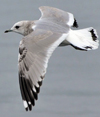 Mew Gull brachyrhynchus 2nd cycle (3CY), January 03 2012, Sayer's Park, WA. Picture: Amar Ayyash.
Mew Gull brachyrhynchus 2nd cycle (3CY), January 03 2012, Sayer's Park, WA. Picture: Amar Ayyash. Mew Gull brachyrhynchus 2nd cycle (3CY), January 03 2012, Seattle, WA. Picture: Amar Ayyash.
Mew Gull brachyrhynchus 2nd cycle (3CY), January 03 2012, Seattle, WA. Picture: Amar Ayyash. Mew Gull brachyrhynchus 2nd cycle (3CY), January 09 2016, Jericho Pier - Locarno Beach, Vancouver, BC. Picture: Pierre Cenerelli.
Mew Gull brachyrhynchus 2nd cycle (3CY), January 09 2016, Jericho Pier - Locarno Beach, Vancouver, BC. Picture: Pierre Cenerelli.  Mew Gull brachyrhynchus 2nd cycle (3CY), February 12 2010, Halfmoon Bay, CA. Picture: Ashok Kahosla.
Mew Gull brachyrhynchus 2nd cycle (3CY), February 12 2010, Halfmoon Bay, CA. Picture: Ashok Kahosla. Mew Gull brachyrhynchus 2nd cycle (3CY), February 21 2009, Dana Point, Orange Co. Picture: John Avise.
Mew Gull brachyrhynchus 2nd cycle (3CY), February 21 2009, Dana Point, Orange Co. Picture: John Avise. Mew Gull brachyrhynchus 2nd cycle (3CY), February 04 2011, Richmond, BC. Picture: Punkbirder.
Mew Gull brachyrhynchus 2nd cycle (3CY), February 04 2011, Richmond, BC. Picture: Punkbirder. Mew Gull brachyrhynchus 2nd cycle (3CY), January 01 2012, Santa Barbara, CA. Picture: David Waltman.
Mew Gull brachyrhynchus 2nd cycle (3CY), January 01 2012, Santa Barbara, CA. Picture: David Waltman. Mew Gull brachyrhynchus 2nd cycle (3CY), February 12 2014, El Granada, CA. Picture: Patty Bruno.
Mew Gull brachyrhynchus 2nd cycle (3CY), February 12 2014, El Granada, CA. Picture: Patty Bruno. Mew Gull brachyrhynchus 2nd cycle (3CY), January 11 2012, Morro Bay, CA. Picture: Bill Bouton.
Mew Gull brachyrhynchus 2nd cycle (3CY), January 11 2012, Morro Bay, CA. Picture: Bill Bouton. Mew Gull brachyrhynchus 2nd cycle (3CY), February 26 2008, Virginia Lake, Washoe Co., Nevada. Picture: Fugl.
Mew Gull brachyrhynchus 2nd cycle (3CY), February 26 2008, Virginia Lake, Washoe Co., Nevada. Picture: Fugl. Mew Gull brachyrhynchus 2nd cycle (3CY), February 21 2015, Alberni-Clayoquot, BC., Canada. Picture: Edward Kroc.
Mew Gull brachyrhynchus 2nd cycle (3CY), February 21 2015, Alberni-Clayoquot, BC., Canada. Picture: Edward Kroc. Mew Gull brachyrhynchus 2nd cycle (3CY), February 11 2006, Half Moon Bay, California, USA. Picture: Glen Tepke.
Mew Gull brachyrhynchus 2nd cycle (3CY), February 11 2006, Half Moon Bay, California, USA. Picture: Glen Tepke. Mew Gull canus 2nd cycle (3CY) E91V January 12 2014, Utrecht, The Netherlands. Picture: Maarten van Kleinwee.
Mew Gull canus 2nd cycle (3CY) E91V January 12 2014, Utrecht, The Netherlands. Picture: Maarten van Kleinwee. Mew Gull canus A688 3CY, February 21 2011, Switzerland. Picture: Stephane Aubry.
Mew Gull canus A688 3CY, February 21 2011, Switzerland. Picture: Stephane Aubry. Mew Gull canus AEPC 3cy, February 25 2012, Bijlmermeer - Amsterdam, The Netherlands. Picture: Maarten van Kleinwee.
Mew Gull canus AEPC 3cy, February 25 2012, Bijlmermeer - Amsterdam, The Netherlands. Picture: Maarten van Kleinwee.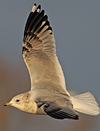 Mew Gull canus 3CY, January 15 2012, Grou, the Netherlands. Picture: Ruurd Jelle van der Leij.
Mew Gull canus 3CY, January 15 2012, Grou, the Netherlands. Picture: Ruurd Jelle van der Leij. 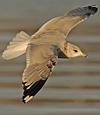 Mew Gull canus 3CY, January 15 2012, Grou, the Netherlands. Picture: Ruurd Jelle van der Leij.
Mew Gull canus 3CY, January 15 2012, Grou, the Netherlands. Picture: Ruurd Jelle van der Leij.  Mew Gull canus 3CY, January 14 2012, Grou, the Netherlands. Picture: Ruurd Jelle van der Leij.
Mew Gull canus 3CY, January 14 2012, Grou, the Netherlands. Picture: Ruurd Jelle van der Leij.  Mew Gull canus 3CY, January 15 2012, Grou, the Netherlands. Picture: Ruurd Jelle van der Leij.
Mew Gull canus 3CY, January 15 2012, Grou, the Netherlands. Picture: Ruurd Jelle van der Leij. 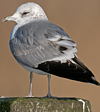 Mew Gull canus 3CY, February 06 2013, Grou, the Netherlands. Picture: Ruurd Jelle van der Leij.
Mew Gull canus 3CY, February 06 2013, Grou, the Netherlands. Picture: Ruurd Jelle van der Leij.  Mew Gull canus 3CY, January 14 2012, Grou, the Netherlands. Picture: Ruurd Jelle van der Leij.
Mew Gull canus 3CY, January 14 2012, Grou, the Netherlands. Picture: Ruurd Jelle van der Leij. 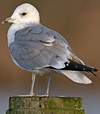 Mew Gull canus 3CY, January 13 2012, Grou, the Netherlands. Picture: Ruurd Jelle van der Leij.
Mew Gull canus 3CY, January 13 2012, Grou, the Netherlands. Picture: Ruurd Jelle van der Leij.  Mew Gull canus 3CY, February 17 2013, Utrecht, The Netherlands. Picture: Maarten van Kleinwee.
Mew Gull canus 3CY, February 17 2013, Utrecht, The Netherlands. Picture: Maarten van Kleinwee..jpg) Mew Gull canus 3CY, January 25 2014, Riga, Letland. Picture: Igor Denisov.
Mew Gull canus 3CY, January 25 2014, Riga, Letland. Picture: Igor Denisov. Mew Gull heinei 3cy 8H2 February 2012, Copenhagen, Denmark. Picture: Kjeld Tommy Pedersen.
Mew Gull heinei 3cy 8H2 February 2012, Copenhagen, Denmark. Picture: Kjeld Tommy Pedersen.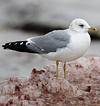 Mew Gull heinei 2nd cycle-type (3CY), February 05 2014, Aktau, W Kazakhstan. Picture: Oleg Belyalov.
Mew Gull heinei 2nd cycle-type (3CY), February 05 2014, Aktau, W Kazakhstan. Picture: Oleg Belyalov. Mew Gull heinei 3cy,
January 2010, Copenhagen, Denmark. Picture: Kjeld Tommy Pedersen.
Mew Gull heinei 3cy,
January 2010, Copenhagen, Denmark. Picture: Kjeld Tommy Pedersen.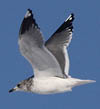 Mew Gull heinei 2nd cycle-type (3CY), January 09 2013, Sorbulak lake, SE Kazakhstan. Picture: Gennadiy Dyakin.
Mew Gull heinei 2nd cycle-type (3CY), January 09 2013, Sorbulak lake, SE Kazakhstan. Picture: Gennadiy Dyakin.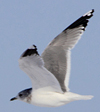 Mew Gull heinei 2nd cycle-type (3CY), January 06 2013, Sorbulak lake, SE Kazakhstan. Picture: Vassiliy Fedorenko.
Mew Gull heinei 2nd cycle-type (3CY), January 06 2013, Sorbulak lake, SE Kazakhstan. Picture: Vassiliy Fedorenko.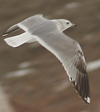 Mew Gull heinei 2nd cycle (3CY), February 11 2015, Almatinskaja obl. okrest. g. Taldykorgana r. Karatal, SE Kazakhstan. Picture: Alexandr Belyaev.
Mew Gull heinei 2nd cycle (3CY), February 11 2015, Almatinskaja obl. okrest. g. Taldykorgana r. Karatal, SE Kazakhstan. Picture: Alexandr Belyaev.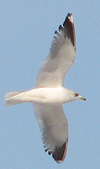 Mew Gull heinei sub-adult, February 23 2008, Baiserke, Ile region, Almaty oblast, SE Kazakhstan. Picture: Askar Isabekov.
Mew Gull heinei sub-adult, February 23 2008, Baiserke, Ile region, Almaty oblast, SE Kazakhstan. Picture: Askar Isabekov.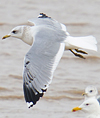 Mew Gull kamtschatschensis/heinei 2nd cycle (3CY), January 30 2016, Nanhui, China. Picture: John MacKinnon.
Mew Gull kamtschatschensis/heinei 2nd cycle (3CY), January 30 2016, Nanhui, China. Picture: John MacKinnon. Mew Gull kamtschatschensis? 2nd cycle (3CY), January 28 2012, Zhuanghe, China (39,05N, 121,39E). Picture: Terry Townsend.
Mew Gull kamtschatschensis? 2nd cycle (3CY), January 28 2012, Zhuanghe, China (39,05N, 121,39E). Picture: Terry Townsend.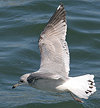 Mew Gull kamtschatschensis 2nd cycle (3CY), February 16 2008, Choshi, Japan. Picture: Akimichi Ariga.
Mew Gull kamtschatschensis 2nd cycle (3CY), February 16 2008, Choshi, Japan. Picture: Akimichi Ariga. Mew Gull kamtschatschensis 2nd cycle (3CY), January 07 2006, Choshi, Japan. Picture: Akimichi Ariga.
Mew Gull kamtschatschensis 2nd cycle (3CY), January 07 2006, Choshi, Japan. Picture: Akimichi Ariga. Mew Gull kamtschatschensis 3rd cycle-type, January 07 2006, Choshi, Japan. Picture: Akimichi Ariga.
Mew Gull kamtschatschensis 3rd cycle-type, January 07 2006, Choshi, Japan. Picture: Akimichi Ariga. Mew Gull kamtschatschensis sub-adult (3rd cycle - type), January 05 2013, Choshi, Japan.Picture: Seichoudoku.
Mew Gull kamtschatschensis sub-adult (3rd cycle - type), January 05 2013, Choshi, Japan.Picture: Seichoudoku. Mew Gull kamtschatschensis 2nd cycle (3CY), February 16 2006, Choshi, Japan. Picture: Seichoudoku.
Mew Gull kamtschatschensis 2nd cycle (3CY), February 16 2006, Choshi, Japan. Picture: Seichoudoku. Mew Gull kamtschatschensis 2nd cycle (3CY), February 16 2006, Choshi, Japan. Picture: Seichoudoku.
Mew Gull kamtschatschensis 2nd cycle (3CY), February 16 2006, Choshi, Japan. Picture: Seichoudoku. Mew Gull kamtschatschensis sub-adult, February 14 2015, Choshi, Japan. Picture: Seichoudoku.
Mew Gull kamtschatschensis sub-adult, February 14 2015, Choshi, Japan. Picture: Seichoudoku. Mew Gull kamtschatschensis sub-adult, February 14 2015, Choshi, Japan. Picture: Seichoudoku.
Mew Gull kamtschatschensis sub-adult, February 14 2015, Choshi, Japan. Picture: Seichoudoku. Mew Gull kamtschatschensis sub-adult (3rd cycle - type), February 14 2015, Choshi, Japan. Picture: Seichoudoku.
Mew Gull kamtschatschensis sub-adult (3rd cycle - type), February 14 2015, Choshi, Japan. Picture: Seichoudoku. Mew Gull kamtschatschensis sub-adult (3rd cycle - type), February 14 2015, Choshi, Japan. Picture: Seichoudoku.
Mew Gull kamtschatschensis sub-adult (3rd cycle - type), February 14 2015, Choshi, Japan. Picture: Seichoudoku. Mew Gull kamtschatschensis 2nd cycle (3CY), February 14 2015, Choshi, Japan. Picture: Seichoudoku.
Mew Gull kamtschatschensis 2nd cycle (3CY), February 14 2015, Choshi, Japan. Picture: Seichoudoku. Mew Gull kamtschatschensis 2nd cycle (3CY), February 14 2015, Choshi, Japan. Picture: Seichoudoku.
Mew Gull kamtschatschensis 2nd cycle (3CY), February 14 2015, Choshi, Japan. Picture: Seichoudoku.



























































